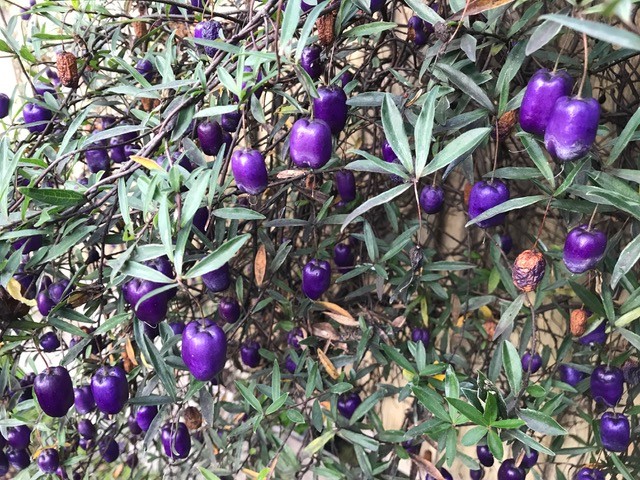
Chrysanthemum superbus
Old fashioned 'shasta daisy' (syn. Leucanthemum superbus) with tall strong stems for picking, bullet proof plant that is reliably perennial and will grow almost anywhere.


Spectacular climber with lime bells followed by purple berries. Trim at early stage to maintain bushy habit and abundant flowering. Native to Tasmania in eucalyptus under-storey, often found with Clematis aristata and Pomaderris elliptica.
Spectacular climber with lime bells followed by purple berries. Trim at early stage to maintain bushy habit and abundant flowering. Native to Tasmania in eucalyptus under-storey, often found with Clematis aristata and Pomaderris elliptica.
Data sheet
Old fashioned 'shasta daisy' (syn. Leucanthemum superbus) with tall strong stems for picking, bullet proof plant that is reliably perennial and will grow almost anywhere.
Richly coloured summer flowering achillea, begins as a deep burnt orange colour and will fade to a soft ochre.
Lowest growing of all the miscanthus, at around knee high, a very versatile and useful foreground filler that wont seed, and looks great with sedums, echinacea, salvia and rudbeckia. Winter foliage has pretty rusty pink tones. Give it nice soil, being a smaller one its fast growing as the big ones.
Long spurred lemon yellow aquilegia, probably derived from Aquilegia chrysantha. Elegant in part shade with hostas and ligularia.
Late summer flowering variety with fine petalled soft blue flowers, clumping and non invasive. Combine with deschampsia, echinacea, sedums and eupatorium.
Very pale turkish delight pink with no spots, never many spare of these but occasionally a few divisions available in winter through to spring.
White form of the blue 'speedwell', just as easy as the blue form. Both varieties are semi deciduous and respond well to cutting back.
A cross between Geranium dalmaticum and G. macrorrhizum with good ground-covering habit and compact growth. A useful landscaping plant which looks tidy for most of the year. The flowers are white to pale pink and held well above the evergreen green foliage. Also good in pots.
Ground cover creating a mossy bright green mounds. Useful for border edges, paths, between rocks with succulents and thyme.
Widely known as the "English" snowdrop, these are native to Turkey and the Caucasus, described by British botanist and plant hunter Henry John Elwes in his botanical expedition to the Caucasus in 1874. One of the more robust species, elwesii is easily recognised by its wider leaf and large flower. Best in a cool shady position on well drained but fertile...
Paprika red yarrow, fades to attractive dusky red as flowers age. Easy drought and frost hardy perennial, medium height.
Strong growing upright variety, taller than 'Goldsturm' with strong upright stems that will hold upright between mounding grasses and lower perennials.
White flowers suffused with the palest lilac, darkest at the tips. Tall stems great for flower arranging. Amongst my current favourites.
A wonderful winter foliage plant, most useful as ground cover around trees and deciduous shrubs. Foliage turns a red then dark chocolate providing it gets winter sun. Flowers yellow, introduced by Planthunters.
Superb dark foliage variety, slightly darker in colour than 'Purple Emperor' with a strong mounding habit.
This is our cutting grown form which gets to chest high and almost a metre across, like a large lavender. Hundreds of white flowers occur on one plant making this one of our favourite and best selling varieties. The foliage is fine and scallop shaped, allowing plants to shape well into dense mounded form. Pinch out at juvenile stage to develop the best...

Spectacular climber with lime bells followed by purple berries. Trim at early stage to maintain bushy habit and abundant flowering. Native to Tasmania in eucalyptus under-storey, often found with Clematis aristata and Pomaderris elliptica.